#los angeles institute
Text




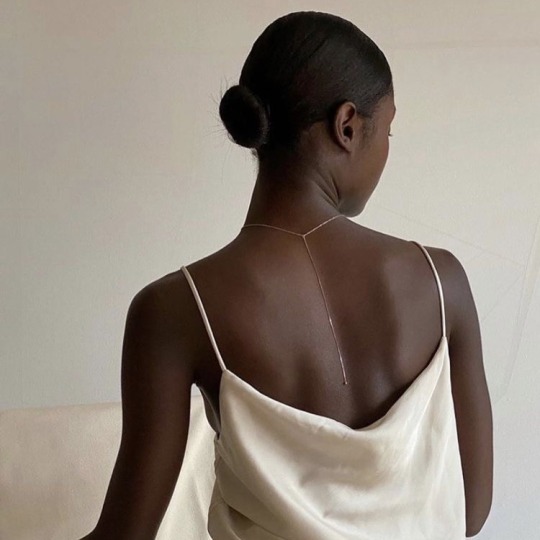




tda char aes -> Diana Wrayburn
“I had never realized before how much you can take from someone by not allowing them the words they need to describe themselves.”
#Diana wrayburn#the dark artifices#the shadowhunter chronicles#character#aesthetic#Diana#tda#tsc#Los Angeles institute#char#aes#tsc char aes series
36 notes
·
View notes
Text
#shadowhunters#the shadowhunter chronicles#tsc#the dark artifices#tda#Los Angeles institute#polls#shadowhunter human au#human au
1 note
·
View note
Photo
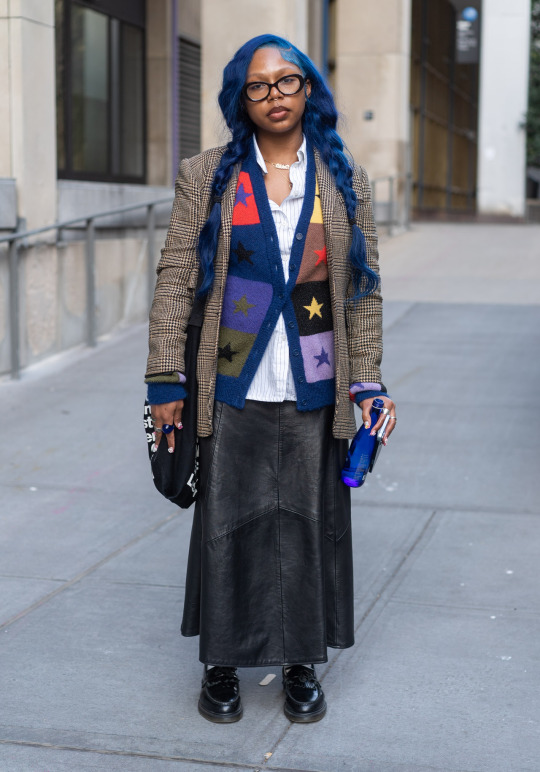
Skye, 21
“My loafers are Dr. Marten, skirt I got at the Manhattan Vintage show, button-down is Uniqlo, cardigan is Heaven by Marc Jacobs, blazer is my mom’s and vintage Ralph Lauren, and bag is Los Angeles Appeal but when they were American Apparel. My style philosophy: Wait for pieces that call to you rather than what the industry is trying to push on you. Curate your own wardrobe thoughtfully.”
Mar 29, 2023 ∙ Chelsea
#nyc looks#street style#street snap#street fashion#style#fashion#clothes#outfit#trends#lookbook#new yorker#fit student#fashion institute of technology#heaven by marc jacobs#vintage ralph lauren#blue hair#leather skirt#los angeles apparel#american apparel
2K notes
·
View notes
Photo

Wolfgang Weingart, February 6, 1941 / 2023
(image: Wolfgang Weingart, The 20th Century Poster. Design of the Avant-Garde, Walker Art Center, Minneapolis, 1984. Museum für Gestaltung Zürich. LACMA – Los Angeles County Museum of Art, Los Angeles, CA. Mia – Minneapolis Institute of Art, Minneapolis, MN)
#graphic design#typography#poster#wolfgang weingart#birthday anniversary#walker art center#museum für gestaltung zürich#lacma#los angeles county museum of art#the minneapolis institute of art#1980s
105 notes
·
View notes
Text
Apple Adds $25 Million to Racial Equity and Justice Initiative, Increasing Financial Commitment to over $200M since 2020
This week, Apple announced its Racial Equity and Justice Initiative (REJI), a long-term global effort to advance equity and expand opportunities for Black, Hispanic/Latinx, and Indigenous communities, has more than doubled its initial financial commitment to total more than $200 million over the last three years.
Since launching REJI in June 2020, Apple has supported education, economic…

View On WordPress
#Ahmaud Arbery#and criminal justice reform#Anti-Recidivism Coalition#Apple#Breonna Taylor#Defy Ventures#Delgado Community College#economic empowerment#Education#George Floyd#HBCUS#Hispanic-Serving Institutions#Houston Community College#HSIs#Los Angeles Community College District#My Brother’s Keeper Alliance (MBKA)#Obama Foundation#Racial Equity and Justice Initiative (REJI)#The Last Mile#Tim Cook#Vera Institute of Justice
16 notes
·
View notes
Text

Amy Yao’s Doppelgängers (2016), a structure that combines pearls, rice, and plastic imitations of both, considers how observation alone is not always able to identify authenticity from verisimilitude. It challenges the viewer to gaze at the mound and question whether they are looking at the true object, imitations of the object, or whether that even matters to begin with.
Individual Collectivity: Scratching at the Moon at ICA Los Angeles
#art#art writing#art criticism#amy yao#asian american artists#aapi#scratching at the moon#institute of contemporary art#los angeles#dylan kaposi#the offing
2 notes
·
View notes
Text

#rolling stone#rolling stone magazine#the fortieth anniversary#ad#full sail#the los angeles film school#MI#musicians institute
3 notes
·
View notes
Text
youtube
LA Stories: Urbanism, Music, and AI in Ed Ruscha’s Street of Los Angeles Archive
6 notes
·
View notes
Photo

this saddens me
30 notes
·
View notes
Text
al things considered — when i post my masterpiece #1133

first posted in facebook november 13, 2022
michaelina wautier -- "self-portrait" (ca. 1649)
"we knew nothing about her. as a specialist working in the field, i didn’t know she existed" ... christopher atkins (director of the center for netherlandish art at the museum of fine arts)
"'it’s really pretty amazing,' said atkins, describing how art historians have traditionally focused on male artists from the era. 'how did we miss these things as a field for so long?'" ... malcolm gay
"i wonder if institutions know it is a problem. there is a lot of discussion about women having more exhibitions, so from the outside it seems like we are celebrating women of different ages. but i wonder if institutions realize that there needs to be a lot more work done. maybe they don’t understand how imbalanced it is" ... naima keith (vice president of education and public programs, los angeles county museum of art)
"the explanation that women [are poorly represented because they] have often decided to leave the art world? i don’t believe that for a minute. i think there have been women working hard in the art world forever and if we haven’t seen them, then shame on us" ... brooke davis anderson (director, the museum at the pennsylvania academy of the fine arts)
"i call bullshit on the idea that it takes a while [to see change]. how much more time does it take? if a new generation of art historians and curators have to be resensitized to this then my god, we have amnesia at this point" ... michelle millar fisher, (curator of contemporary decorative arts, museum of fine arts, boston)
"well, first of AL, i probably would fire christopher atkins (the alleged director of the NETHERLANDISH art at the museum of fine arts here in boston) IF he really did not even know that a master from the 'dutch golden age' like wautier even existed" ... al janik
#michaelina wautier#self-portrait#christopher atkins#art historians#center for netherlandish art at the museum of fine arts#boston#malcolm gay#female artists#naima keith#institutions#los angeles county museum of art#brooke davis anderson#museum at the pennsylvania academy of the fine arts#women artists#shame#michelle millar fisher#museum of fine arts#bullshit#al things considered
2 notes
·
View notes
Text
As relentless rains pounded LA, the city’s “sponge” infrastructure helped gather 8.6 billion gallons of water—enough to sustain over 100,000 households for a year.
Earlier this month, the future fell on Los Angeles. A long band of moisture in the sky, known as an atmospheric river, dumped 9 inches of rain on the city over three days—over half of what the city typically gets in a year. It’s the kind of extreme rainfall that’ll get ever more extreme as the planet warms.
The city’s water managers, though, were ready and waiting. Like other urban areas around the world, in recent years LA has been transforming into a “sponge city,” replacing impermeable surfaces, like concrete, with permeable ones, like dirt and plants. It has also built out “spreading grounds,” where water accumulates and soaks into the earth.
With traditional dams and all that newfangled spongy infrastructure, between February 4 and 7 the metropolis captured 8.6 billion gallons of stormwater, enough to provide water to 106,000 households for a year. For the rainy season in total, LA has accumulated 14.7 billion gallons.
Long reliant on snowmelt and river water piped in from afar, LA is on a quest to produce as much water as it can locally. “There's going to be a lot more rain and a lot less snow, which is going to alter the way we capture snowmelt and the aqueduct water,” says Art Castro, manager of watershed management at the Los Angeles Department of Water and Power. “Dams and spreading grounds are the workhorses of local stormwater capture for either flood protection or water supply.”
Centuries of urban-planning dogma dictates using gutters, sewers, and other infrastructure to funnel rainwater out of a metropolis as quickly as possible to prevent flooding. Given the increasingly catastrophic urban flooding seen around the world, though, that clearly isn’t working anymore, so now planners are finding clever ways to capture stormwater, treating it as an asset instead of a liability. “The problem of urban hydrology is caused by a thousand small cuts,” says Michael Kiparsky, director of the Wheeler Water Institute at UC Berkeley. “No one driveway or roof in and of itself causes massive alteration of the hydrologic cycle. But combine millions of them in one area and it does. Maybe we can solve that problem with a thousand Band-Aids.”
Or in this case, sponges. The trick to making a city more absorbent is to add more gardens and other green spaces that allow water to percolate into underlying aquifers—porous subterranean materials that can hold water—which a city can then draw from in times of need. Engineers are also greening up medians and roadside areas to soak up the water that’d normally rush off streets, into sewers, and eventually out to sea...
To exploit all that free water falling from the sky, the LADWP has carved out big patches of brown in the concrete jungle. Stormwater is piped into these spreading grounds and accumulates in dirt basins. That allows it to slowly soak into the underlying aquifer, which acts as a sort of natural underground tank that can hold 28 billion gallons of water.
During a storm, the city is also gathering water in dams, some of which it diverts into the spreading grounds. “After the storm comes by, and it's a bright sunny day, you’ll still see water being released into a channel and diverted into the spreading grounds,” says Castro. That way, water moves from a reservoir where it’s exposed to sunlight and evaporation, into an aquifer where it’s banked safely underground.
On a smaller scale, LADWP has been experimenting with turning parks into mini spreading grounds, diverting stormwater there to soak into subterranean cisterns or chambers. It’s also deploying green spaces along roadways, which have the additional benefit of mitigating flooding in a neighborhood: The less concrete and the more dirt and plants, the more the built environment can soak up stormwater like the actual environment naturally does.
As an added benefit, deploying more of these green spaces, along with urban gardens, improves the mental health of residents. Plants here also “sweat,” cooling the area and beating back the urban heat island effect—the tendency for concrete to absorb solar energy and slowly release it at night. By reducing summer temperatures, you improve the physical health of residents. “The more trees, the more shade, the less heat island effect,” says Castro. “Sometimes when it’s 90 degrees in the middle of summer, it could get up to 110 underneath a bus stop.”
LA’s far from alone in going spongy. Pittsburgh is also deploying more rain gardens, and where they absolutely must have a hard surface—sidewalks, parking lots, etc.—they’re using special concrete bricks that allow water to seep through. And a growing number of municipalities are scrutinizing properties and charging owners fees if they have excessive impermeable surfaces like pavement, thus incentivizing the switch to permeable surfaces like plots of native plants or urban gardens for producing more food locally.
So the old way of stormwater management isn’t just increasingly dangerous and ineffective as the planet warms and storms get more intense—it stands in the way of a more beautiful, less sweltering, more sustainable urban landscape. LA, of all places, is showing the world there’s a better way.
-via Wired, February 19, 2024
#california#los angeles#water#rainfall#extreme weather#rain#atmospheric science#meteorology#infrastructure#green infrastructure#climate change#climate action#climate resilient#climate emergency#urban#urban landscape#flooding#flood warning#natural disasters#environmental news#climate news#good news#hope#solarpunk#hopepunk#ecopunk#sustainability#urban planning#city planning#urbanism
13K notes
·
View notes
Text
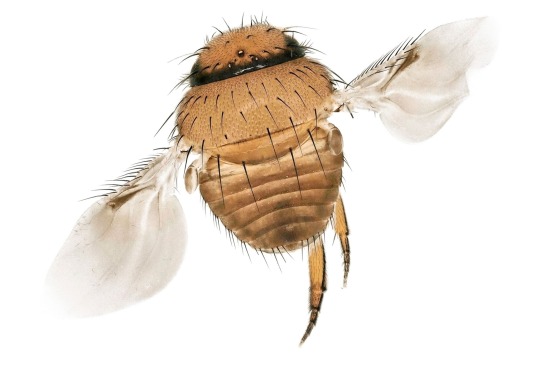
Trapped at eight meters (26 feet) above the ground, this yet-to-be-named phorid fly species is a “parasitoid death-dealing machine” that jabs its eggs into other insects, says entomologist Brian Brown. Brown, the curator of entomology at the Natural History Museum of Los Angeles County, photographed the insects in this article using a camera-and-microscope setup that was originally developed to examine flaws in computer chips. Photograph By Brian Brown, Natural History Museum of Los Aangele County
For Insects, The Amazon’s Canopy Contains A Dazzling Multiverse
A new study finds that high in rainforest trees, insects live in ecosystems that vary wildly from the forest floor on up.
— By Natasha Daly | Published March 2, 2022 | Saturday October 7, 2023
“I thought, my God, this is like someone’s discovered another continent!” says Brian Brown, an Entomology Curator at the Natural History Museum of Los Angeles County. He was talking about insects.
When studying insects in the Amazon, most entomologists cast their eyes down, to the intricate pathways of moss and underbrush that make up the rainforest floor. But José Albertino Rafael wanted to look up. Really far up—to more than 105 feet in the canopy.
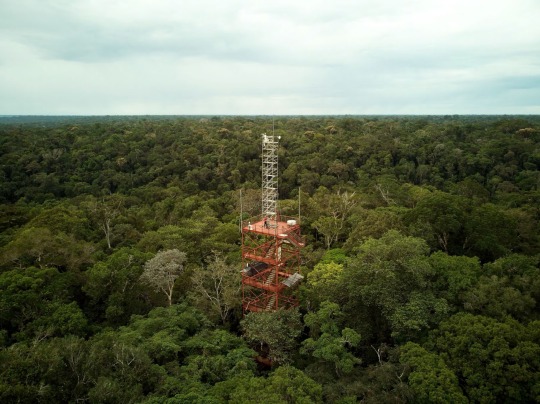
Two hours northwest of Manaus, Brazil, a 131-foot steel tower rises from a pristine area of the rainforest. Built in 1979, the tower had long been used to track the exchange of carbon dioxide between the trees and the atmosphere, but more recently it has been used for pioneering entomology research. Photograph By Craig Cutler
During two weeks in 2017, Rafael, an Entomologist at Brazil’s National Institute of Amazonian Research, and colleagues trapped insects at various heights, starting at ground level, from a 131-foot tower erected in the middle of the Amazon, just outside Manaus.
The findings were staggering, says Brown, who was part of a team that examined and recorded all 37,000 insects that were collected. Nearly half of them were flies. “There were weird and different things. I didn’t even know what genus these were, let alone species.”
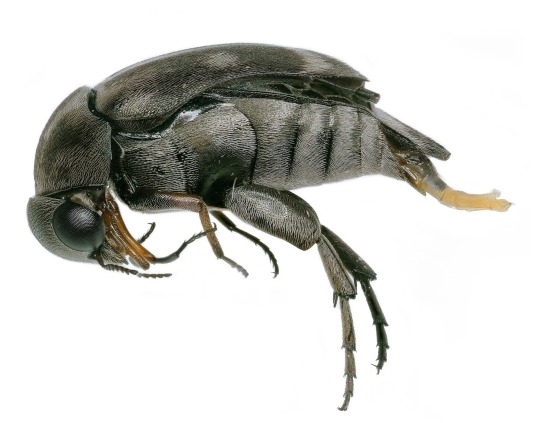
Ground Level: Tumbling flower beetles have a triangular body that helps them escape predators. Photograph By Brian Brown, Natural History Museum of Los Aangele County
The results of their analysis, published in Nature on February 2, point to a distinct and previously unexamined network of ecosystems in rainforest trees. More than 60 percent of the 857 species of flies collected, for example, were found above ground level. Many, if not most, likely are new species, Brown says.
Previous studies have compared insects on the ground with those in the canopy, but this is one of the first efforts to understand insect diversity at smaller vertical intervals.
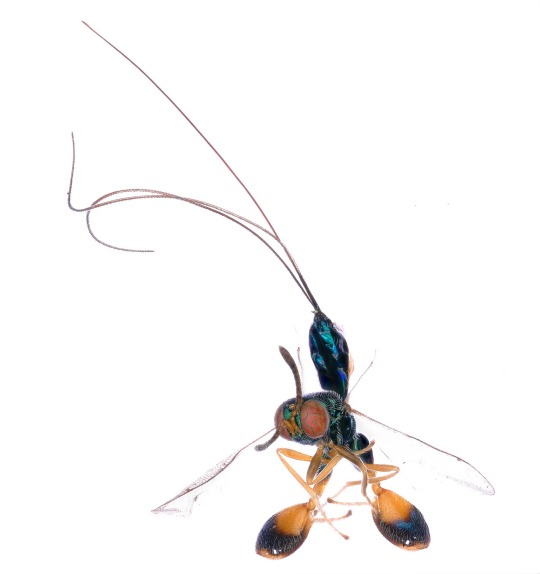
8 Meters (26 Feet): The mantis wasp uses its ovipositor—a needlelike organ for laying eggs—to pierce the egg cases of mantises. When the wasp’s larvae hatch, they feed on the mantis’s eggs. Photograph By Brian Brown, Natural History Museum of Los Aangele County
The findings underscore how much of the insect world still remains undiscovered, says Floyd Shockley, the collections manager of the entomology department at the Smithsonian Institution’s National Museum of Natural History, who was not involved in the study.
“Millions of things that live in the tropical canopy never come to ground,” he says, adding that these kinds of vertical studies “are incredibly important because [without them], we’re missing out on a tremendous amount of biodiversity.”
Sorting Insects
To collect the insects, Rafael set five large, tent-like netted traps off the tower at 26-foot intervals, starting at ground level and reaching up to 105 feet.
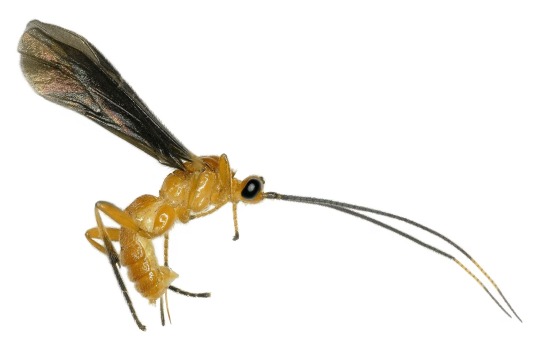
16 Meters (52 Feet): Both the forest canopy and the undergrowth are patrolled by parasitoid wasps seeking their prey—mostly caterpillars. Photograph By Brian Brown, Natural History Museum of Los Aangele County
Brown and Dalton de Souza Amorim, an entomologist at the University of Sao Paolo, and the rest of their team first sorted the insects by order (flies, beetles, bugs, and more). They focused on Diptera—flies—sorting more than 16,000 specimens into 56 families, then into 857 species. It’s unclear how many of those species are new to science. “It would take years and a ton of research to find out,” Brown says, but he guesses that many or most are undescribed.
Some families of flies were most abundant and diverse on the ground. Others were concentrated in the canopy. Still others peaked at the middle levels. Notably, between 90 and 100 percent of specimens of some families of flies were found in the four highest traps.

24 Meters (79 Feet): The watchful jewel beetle's massive eyes allow it to flee from predators—and researchers—quickly, making the beetles difficult to collect for study. Photograph By Brian Brown, Natural History Museum of Los Aangele County
What’s the Bigger Picture?
So much remains unknown about insects. “We’re still finding fish and amphibians, but we’re getting pretty close on birds and mammals to having a complete picture on their diversity,” Shockley says. But scientific models estimate the number of undiscovered insect species at between five and 30 million. “Every time we get one of these studies, it helps us improve the model so we can see how much we haven’t discovered.”
There are many reasons why knowledge of so many insect species remains elusive. “They’re small, they’re fast, they’re highly diverse, and they can occupy almost any niche,” he says.
So “we have to understand how they interact with each other, us, and crops,” Shockley says. “And we can’t talk about what they’re doing until we put a name on what they are.”

32 Meters (105 Feet): Iridescent orchid bees, tropical cousins of bumblebees and honeybees, are among the multitude of insects that entomologists have collected at the observation tower. Photograph By Brian Brown, Natural History Museum of Los Aangele County
Most insect sampling has been done based on latitude and longitude and sometimes altitude—up a mountain, for example, where habitats can change dramatically. But by collecting insects vertically in forest habitats, which is hard to do, Shockley says, “we’re adding an additional dimension to our understanding of diversity in three-dimensional space.”
Flies get a bad rap—it can be hard for people to understand why we should care about them. “But organisms [like insects] are arguably way more important than mammals or birds for the structure of the forest,” Brown says. “They’re important for pollination, energy, recycling, and more. What would happen if there were no insects feeding on decaying bodies? The ecosystem services they provide are so vital—but almost invisible.”
#The Insects 🐞 🕷️ 🐜#The National Geographic#Natasha Daly#Brian Brown | Entomology Curator | Natural History Museum | Los Angeles County.#Manaus | Brazil 🇧🇷#Rafael | Entomologist | Brazil’s 🇧🇷 National Institute of Amazonian Research
0 notes
Photo

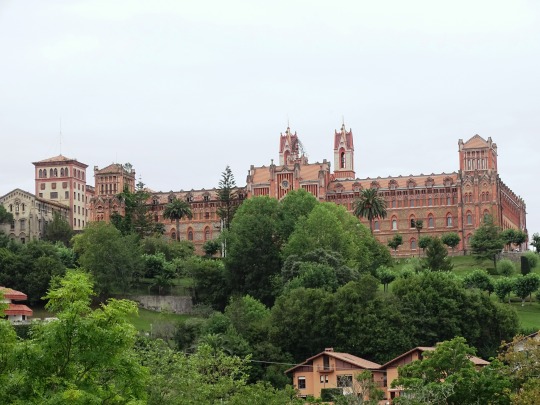
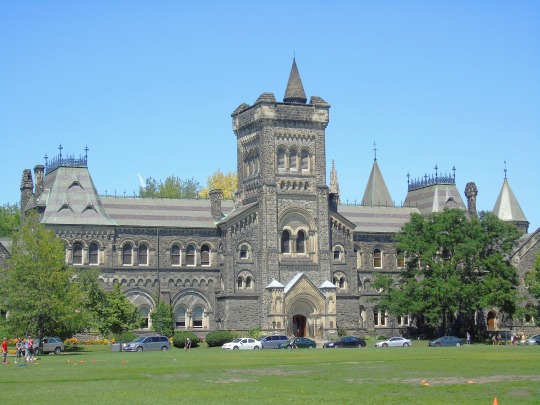
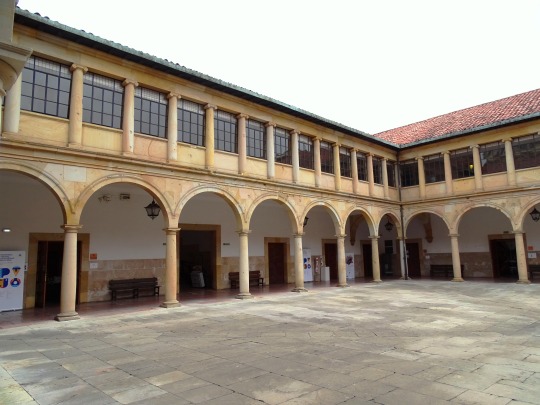






National Higher Education Day
National Higher Education Day is celebrated on June 6 every year to recognize the importance of education in improving our lives. To excel in your dream job, it is important to have the latest knowledge in that field, which can be attained through higher education. Millions of young and old people take time out on this day to make plans to get a higher education and think about the options that they have by researching scholarships, potential career choices, and even doing a bit of job-shadowing.
History of National Higher Education Day
National Higher Education Day was founded by Izamar Olaguez and Marcie Hronis in 2015. The main purpose behind celebrating this day is to motivate students to pursue higher education and make college fees affordable for all. Each year, hundreds of students and universities unite to spread awareness about National Higher Education Day in the U.S.
The federal government signed the Higher Education Act in 1965. The main purpose of signing this act was to improve the higher education programs of educational institutions in the U.S. and offer monetary assistance to students who are unable to afford their college fees.
The Higher Education Act was backed by both the federal and national level governments. Individual states also developed a similar program to support students who want to enroll in colleges and universities for higher education. Making higher education accessible is the primary goal of National Higher Education Day. This includes motivating and funding students to get enrolled in an undergraduate or a postgraduate degree program.
National Higher Education Day also initiates various activities, which are continued all year round. It helps students get useful information on how to get scholarships and prepare themselves both mentally and financially for pursuing a higher education degree in the U.S.
National Higher Education Day timeline
1850 America's Educational Boom
More than 200 higher education institutions are established in the U.S.
1862 The Morrill Act of 1862
New western states create colleges for agricultural, mechanical, and military sciences.
1900 Association of American Universities
Presidents of Ph.D.-granting universities unite to develop policies for higher education
1918 American universities and WWI
American universities create special training courses for military personnel in WWI.
How to Celebrate National Higher Education Day
Raise awareness for higher education
Opt for educational counseling
Become part of an online community
Celebrate National Higher Education Day by posting about the benefits of higher education online and on various social media sites with the hashtag #NationalHigherEducationDay. Moreover, you can also post interesting pictures related to your education and your upcoming academic goals. You can share how your school, college, or university has groomed you in both your personal and academic life.
If you are still unsure about your future studies then now is the perfect time to discuss this with a trained professional. Through a professional counselor, you can get the right type of assistance to develop your educational plan and pick the right type of college and courses based on your interests, skills, and abilities.
You can join an online community on Facebook or any other social networking site that you frequently use. You can interact with other fellow students who are a part of a similar undergraduate or postgraduate degree program. Through these communities, students get to share free educational resources and help each other get paid and unpaid internships that are specifically offered to college and university students.
5 Facts About American Colleges That Are Worth Knowing
A quirky college club
Doctor of Amphibious Letters
World's biggest library
Girl power
5,000+ colleges
There's a Squirrel Club at the University of Michigan with more than 400 active members that come together annually to feed squirrels.
Kermit the frog was awarded an honorary doctorate from Southampton College.
Harvard boasts the world's biggest library with over 15.8 million items of reading material.
There are more than 60 female colleges in the U.S.
There are around 5,000 higher education institutions in the U.S.
Why we love National Higher Education Day
Employees can excel in their current fields
It gives tips for finding college scholarships
It appreciates the efforts of college students
This day inspires those working professionals who want to advance in their respective fields. Getting a postgraduate degree can help professionals get familiar with the latest market trends that are in sync with their current fields. Higher education also helps people learn interpersonal skills that can turn them into valuable assets for their future organizations.
Pursuing a higher education degree requires a financial commitment. Higher education can be rewarding for those who want to switch to a new field or excel in their existing field of study. However, most students don't consider going to a college or university after school due to a lack of financial support. The good news is that there are different scholarship programs for students that are funded by the government and private organizations. Some of these private organizations are directly affiliated with different colleges and universities of the country. Students can either directly reach out to these organizations or apply for a scholarship program through their college or university.
This day is also celebrated to appreciate the efforts of students who are already receiving a higher education. Education after school is not free in the U.S. Students are required to pay their tuition fee alongside other college expenses including conveyance and many end up accumulating large amounts of student-loan debt. To pay for these expenses, many students have to do part-time jobs, which again can be quite challenging to manage alongside their studies. This day, therefore, is a great way to appreciate the efforts of these hardworking students and motivate them to complete their higher education.
Source
#University College#University of Toronto#Harvard University#Canada#Spain#Ryerson University Student Learning Centre#Edifíciu historicu de la Universidá d'Uvieu#Oviedo#Comillas Pontifical University#Flagler College#St. Augustine#World Maritime University#Malmö#Sweden#The Art Institute of California#Los Angeles#National Higher Education Day#6 June#NationalHigherEducationDay#architecture#cityscape#tourist attraction#USA#landmark
0 notes
Photo
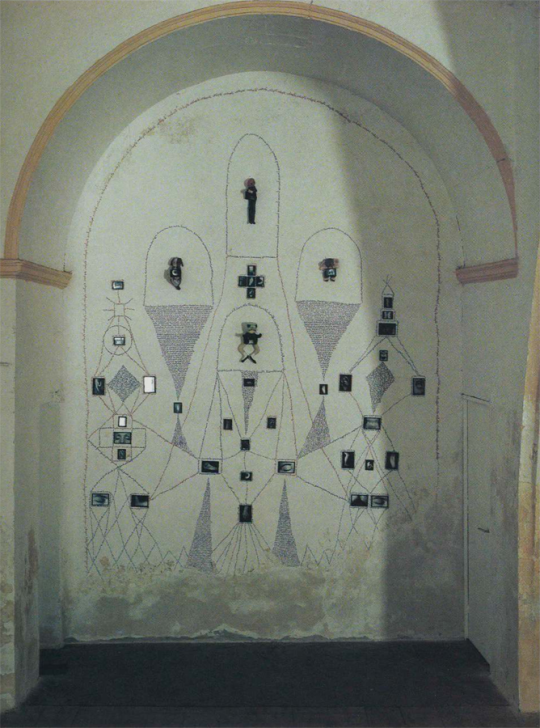

Annette Messager, Mes ouvrages, 1987, (installation view), St. Martin du Mejean, Aries, 1989 [© Annette Messager]; in Sheryl Conkelton and Carol S. Eliel, Annette Messager, Los Angeles County Museum of Art, Los Angeles, CA / The Museum of Modern Art, New York, NY, Distributed by Harry N. Abrams, 1995, p. 28 (pdf here) [Exhibitions: Los Angeles County Museum of Art, Los Angeles, CA, June 15 – September 3, 1995; The Museum of Modern Art, New York, NY, October 12, 1995 – January 16, 1996; The Art Institute of Chicago, Chicago, IL, February 17 – May 5, 1996]
#graphic design#art#visual writing#drawing#photography#structure#installation#exhibition#catalogue#catalog#annette messager#sheryl conkelton#carol s. eliel#st. martin du mejean#los angeles county museum of art#moma#the museum of modern art#the art institute of chicago#1980s#1990s
69 notes
·
View notes
Photo

Lim Young-woong Finally Receives Entertainment...First Singleness Reality Launched May 28
Source: k-star-holic.blogspot.com
0 notes
Text

Individual Collectivity: Scratching at the Moon at ICA Los Angeles
Contrasting with the video art, a table displays an array of domestic objects which are arranged in an orderly cluster, documenting the subjects of a plethora of images that Amanda Ross-Ho found in her father’s own photography portfolio. The work, Untitled Prop Archive (THE PORTFOLIO) (2024) combines found objects with fabricated ones, placed on a table that imitates that which she remembers from her childhood home. Beyond the sculptural work is a large lightbox containing a water-damaged image of Ross-Ho’s father, who practiced as a photographer in a commercial photography studio, standing behind an arrangement of boxes containing laundry detergent and trash bags, at work. The striking image is framed in such a way that it looks almost as if he is sitting at the table, presiding over all the domestic goods that he once photographed. Ross-Ho’s work, much like the rest of the exhibition, evokes a sense of vulnerability, domesticity, and intimacy.
Image: Installation view of Scratching at the Moon, Institute of Contemporary Art, Los Angeles, February 10–July 28, 2024. Photo: Jeff McLane / ICA LA
#art#art writing#art criticism#photography#amanda ross ho#asian american artists#scratching at the moon#institute of contemporary art#los angeles#dylan kaposi#the offing
1 note
·
View note